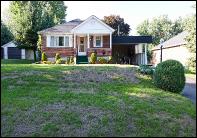Insect Control
The Chinch Bug
Watch out for the dreaded Chinch!
 Late spring and early summer is the time of year when we start to get calls from people wondering why their lawns are turning brown in spots despite plenty of rain or repeated watering. On visiting the properties, we usually find a lack of water is not the problem. It is the dreaded “chinch” (pronounced “inch” with a hard “CH” in front).
Late spring and early summer is the time of year when we start to get calls from people wondering why their lawns are turning brown in spots despite plenty of rain or repeated watering. On visiting the properties, we usually find a lack of water is not the problem. It is the dreaded “chinch” (pronounced “inch” with a hard “CH” in front).
Officially known as the hairy chinch bug, these pests are surface feeding insects that have piercing-sucking mouth parts and they destroy the grass by piercing the blade tissue and sucking out the juices. If not treated, an entire lawn can be destroyed, even though these pests are less than 5mm in length.
Chinch bugs winter in protected areas like hedges and flower beds, and even close to house foundations. They become dormant in the Fall and will remain dormant until the weather warms in the Spring. Adults will move into the grass at this point and begin to feed. Females will usually lay eggs in June, and then a couple weeks later the newly hatched nymphs will start to feed as well. Then signs of browning will be noticed.
The chinch bugs are black and greyish-white in colour with reddish brown legs. Wings are folded over the back of the insect and may appear as a white strip across their backs.
 In our area, we find the best time to apply a control in early to mid-July after the nymphs have hatched. While there may be some damage to your lawn prior to the control application, it is still best to wait until the majority of the eggs have hatched. Usually grass will rejuvenate relatively quickly as the roots have not been damaged yet. An application of the proper quality fertilizer after chinch bug control can aid in the grass recovery.
In our area, we find the best time to apply a control in early to mid-July after the nymphs have hatched. While there may be some damage to your lawn prior to the control application, it is still best to wait until the majority of the eggs have hatched. Usually grass will rejuvenate relatively quickly as the roots have not been damaged yet. An application of the proper quality fertilizer after chinch bug control can aid in the grass recovery.
If you believe you have a chinch bug issue, please call us directly. We will be happy to check out your lawn and advise!
